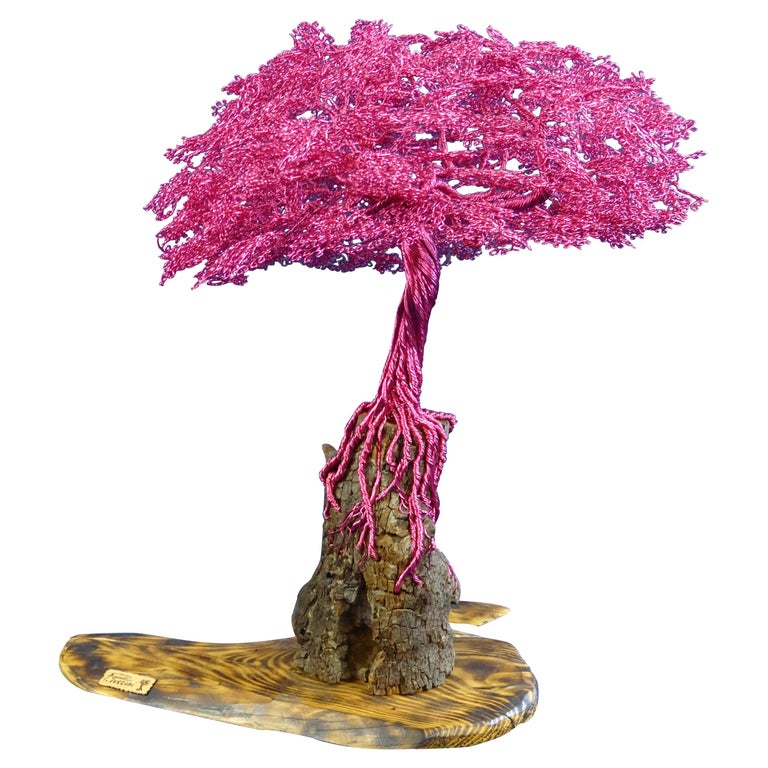Bonsai tree styling techniques shape trees into miniature artistic forms. Common methods include pruning, wiring, and grafting.
Bonsai, the ancient Japanese art form of miniature tree cultivation, integrates nature and creativity into a harmonious display. By understanding and applying key styling techniques, enthusiasts can transform ordinary trees into extraordinary bonsai specimens. Proper styling not only enhances the visual appeal of these living sculptures but also ensures their health and longevity.
From the initial choice of tree species to the meticulous care in shaping, every step in the bonsai styling process is deliberate and holds significance. This introduction to bonsai styling techniques prepares gardeners and hobbyists to embark on the rewarding journey of bonsai artistry, creating serene and elegant representations of the natural world in miniature.
Table of Contents
The Essence Of Bonsai
The art of Bonsai has deep roots in tradition, tracing back centuries. It is a way to create natural beauty in miniature. Bonsai trees embody harmony and patience, shaped carefully over time. Enthusiasts see bonsai as more than plants; they are living sculptures. Each tree tells a unique story through its form, reflecting the balance of nature. Skilled artists use various styling techniques to guide these stories. This creates stunning visual poetry. The tree’s size and shape evolve with the artist’s vision, showcasing the essence of Bonsai. This ancient art captures nature’s essence, bringing its tranquility into our homes.
Selecting Your Bonsai Subject
Selecting the right species for your bonsai is crucial. Consider growth rate, leaf size, and hardiness before choosing. Some species adapt well to bonsai techniques, while others do not. Maples, pines, and junipers often make excellent subjects due to their flexibility and resilience.
Before starting, inspect the plant’s structure. Look for a strong trunk and well-positioned branches. Root health is equally important for long-term success. Imagine the potential of your bonsai as you examine each tree. This foresight can guide your styling decisions in the years to come.
Basic Styling Types
Bonsai tree styling is an art that transforms trees into miniature landscapes. The Formal Upright Style, known as Chokkan, features trees with straight trunks. These trunks are thicker at the bottom and taper towards the top. Main branches spread out evenly, starting one third up the trunk.
The Informal Upright Style, or Moyogi, is similar but with curved trunks. Trees of this style resemble mature, yet smaller, versions of full-sized trees. This style is popular among beginners due to its natural look and simpler approach.
Slanting Style, or Shakan, features trees leaning to one side. These trees have a solid root base on the side opposite the slant, offering balance. Slanted trunks convey motion and can suggest growth in a windy environment.

Credit: www.newyorker.com
Tools Of The Trade
Concave Cutters are essential for precise pruning. They create smooth cuts that heal quickly. Using these, bonsai artists can remove branches without leaving stubs. This helps maintain the tree’s natural look.
Bonsai Wire and Pliers help in shaping branches. The wire wraps around branches to guide their growth. Pliers ensure firm grips for safe wiring. Correct usage prevents bark damage and ensures desired shapes.
Root Rakes and Hooks untangle roots without harm. They prepare roots for pruning and repotting. Rakes loosen soil, letting air and water reach roots. Hooks are great for removing excess soil. They keep the root system healthy for a sturdy bonsai.
Wiring Techniques
Applying bonsai wire is a delicate process. Proper techniques ensure the tree’s growth and shape. Thicker wire controls main branches. Use thinner wire for smaller branches. Start from the trunk, moving outwards to the tips.
Timing is critical for wiring bonsai trees. Spring is often best, as trees are growing. This allows for adjustments as the tree develops. It’s essential to monitor the tree. This prevents cutting into the bark.
Wire removal requires care. If the wire is tight, cut it off. Never unwind the wire. This can damage the branches. Inspect regularly, as the growing season can speed up the process. Always use bonsai wire cutters for this task.
Pruning For Perfection
Pruning for Perfection shapes and maintains Bonsai trees. Structural Pruning involves cutting branches.
This creates a tree’s basic shape. It is often done in winter. Maintenance Pruning keeps this shape.
It occurs more often to manage new growth. Defoliation is used on deciduous trees.
It reduces leaf size. This helps make the tree look smaller. This technique requires timing and care.
Achieving Balance And Proportion
Creating harmony in Bonsai trees involves careful branch positioning. The goal is visual balance, which you achieve by arranging branches at various heights and directions. Lower branches should extend out wider to give a stable look. Upper branches need to be shorter and point upwards for a natural appearance.
The tree trunk tapering is also crucial for Bonsai aesthetics. A strong thick base that narrows to the apex of the tree mimics mature trees. This technique involves selective pruning and wiring to guide growth. Over time, tapering gives the tree an illusion of age and strength.
Advanced Styles And Techniques
Cascade and semi-cascade bonsai styles mimic nature’s gravity pull on trees. Trees grow downwards, like waterfalls. Your bonsai can mimic this too.
With Literati style, imagine trees battling for light. They twist, turn, and reach high. This style shows unseen wind and struggle. It’s about survival beauty.
Group Planting creates a mini-forest. You place multiple trees together. They should vary in size and form a natural scene. Picture a forest walk in a pot.
Seasonal Care For Continual Aesthetics
Seasonal care keeps your Bonsai trees thriving. Each season demands specific attention. Repotting is essential for Bonsai health and should generally occur during spring. Choose the right soil mixture and a pot that complements your tree’s size.
Winter brings cold threats to Bonsais. Shield trees from frost by moving indoors or using protective covers. Ensure adequate light exposure and avoid over-watering during these dormant months.
For Summer maintenance, a consistent watering routine is key. The sun and heat increase the need for moisture. Yet, don’t drown the roots; allow the soil to dry slightly between waterings. Shield from extreme heat to prevent leaf scorching.

Credit: www.1stdibs.com
Overcoming Common Styling Challenges
Handling pests and diseases in bonsai is crucial. Inspect your bonsai regularly for signs of trouble. Yellowing leaves or small holes indicate pests. Spray with insecticidal soap for minor infestations. For serious problems, consult a bonsai specialist for the best course of action.
To repair damaged trees, act swiftly. If a branch breaks, carefully realign it using raffia and wire. Allow time for recovery before any further styling. Use cut paste on larger wounds to promote healthy healing.
Styling ageing bonsai requires a delicate touch. Prune with purpose, ensuring not to over trim. Respect the tree’s natural form while guiding its shape. This approach will add elegance and character to your aged bonsai.
Bonsai Inspiration And Creativity
Bonsai trees carry rich beauty and express clear artistry. Real inspiration flows from examining masterpieces by bonsai artists. Observe their works to unlock styling secrets and foster personal growth. Creativity blooms through interaction and learning from accomplished masters.
Experimentation plays a key role in the art of bonsai. Trying new styles brings surprises and innovation. Don’t fear making mistakes, as they lead to unique discoveries. Every twist and trim can reveal new forms, enhancing a tree’s essence.
Engaging with bonsai communities offers immense benefits. They provide a platform for sharing experiences and receiving feedback. Such interaction promotes learning and helps refine bonsai techniques. Working alongside like-minded enthusiasts empowers creativity. It’s about the joint journey in bonsai artistry.
Fostering Connections
Bonsai tree styling is a revered art form, merging horticulture with creative expression. Participation in bonsai exhibitions serves as a pivotal platform for enthusiasts to showcase their mastery and learn from peers. These events often feature a range of exquisitely styled bonsai trees, providing inspiration for both novices and experts alike.
Engaging in workshops and classes can significantly enhance one’s bonsai styling skills. With hands-on guidance from experienced instructors, attendees gain valuable insights into pruning, wiring, and shaping techniques. Whether a beginner or an adept, classes cater to all levels, helping individuals foster deeper connections with the art of bonsai.

Credit: www.amazon.com
Frequently Asked Questions For Bonsai Tree Styling Techniques
How Do I Shape My Bonsai Tree?
To shape a bonsai tree, select a style and prune branches accordingly. Use wiring techniques to position branches and trunks. Trim leaves to reduce leaf size and encourage growth. Monitor tree health and adjust care as needed. Regular maintenance shapes and maintains the desired form.
When Should I Start Styling My Bonsai Tree?
Begin styling your bonsai tree after it has established strong roots, typically 2-5 years after planting. Tailor pruning and wiring techniques to your tree’s growth pattern and species-specific needs.
What Are The Techniques Of Bonsai Tree?
Bonsai tree techniques include selective pruning, wiring branches for shape, repotting for health, and using proper soil and fertilization. Regular watering and sunlight exposure are essential for growth.
What Is The Easiest Bonsai Style?
The easiest bonsai style is the “formal upright” (Chokkan). This style features a straight, vertical trunk and is ideal for beginners.
Conclusion
Crafting a unique bonsai masterpiece takes patience and practice. With the styling techniques shared, you’re equipped to shape your bonsai’s journey. Embrace each step’s artistry and watch your miniature tree evolve. Cultivate your skills, and let creativity flourish. Start styling your bonsai today — the possibilities are endless.
